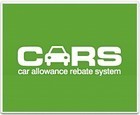Fence-sitters have made `cash for clunkers' a hit
SEE ALSO: Cash for Clunkers Consumer Guide-Qualifying Vehicles
Washington DC August 7, 2009; Dan Strumph writing for the AP reported that the people who have made "cash for clunkers" such a success were fence-sitters — a Virginia family wondering whether to keep pouring money into what they called the "dog car," a Colorado couple hanging on to their Ford in case the children ever wanted it.
The clunkers program made it a no-brainer.
Or as Ron Johnson, a retired college financial aid counselor who was going from dealership to dealership in Manhattan this week in hopes of trading in his 1995 Pontiac, put it: "We're Americans. Life is a deal."
And this deal — up to $4,500 from the government for trading in your old gas-guzzler for a cleaner new car — simply proved too good to pass up. And it pushed thousands of Americans ambivalent about whether to ditch the old ride into a decision. Especially when it appeared the program was running out of money last week.
Mike Ward, an attorney from rural eastern Virginia, had no plans to replace his 1995 Ford Explorer, known to his family as the "dog car" because they used it to drive their dogs around.
But repairs were adding up, so Ward drove the 80 miles to a Lexus dealership and bought a midsize SUV for $40,000 after discounts.
"I was on the fence until I learned the money was running out," he said.
The Senate on Thursday voted to approve adding $2 billion to "cash for clunkers," which proved so popular it quickly burned through its original $1 billion.
With the economy appearing to stabilize, analysts figure the program drew far more participants this year than it might have six months ago. One Washington estimate this week suggested 300,000 Americans had taken advantage of the clunker rebates.
"People have some money saved up," said Michael Belch, a professor at San Diego State University who specializes in consumer behavior. "I know the economy is bad ... but we're not in the 1930s Depression here. People can go out and spend, and they are going to go out and spend."
Dealers say buyers are predominantly older drivers who own more than one vehicle and have a clunker to spare.
"These were not people that we would see normally," said Jim Paul, co-owner of four Pontiac-GMC-Buick dealerships near Minneapolis, suggesting sales at his showrooms could return to normal when the program expires rather than drop off, as some economists have suggested.
If Paul is proved right, the program could give the economy a legitimate lift.
Car companies say "cash for clunkers" made July their best sales month of the year. So far, 83 percent of trade-ins have been trucks.
The government says the Toyota Corolla is the top-selling vehicle so far, followed by the Ford Focus and Honda Civic. The top clunkers turned in has been the Ford Explorer, followed by the Ford F150 pickup and Jeep Grand Cherokee.
Steve Nacamulli of Brisbane, Calif., turned in his Econoline van for a hybrid, motivated by rising gas prices that had forced him to cut back on trips to San Francisco.
As popular as the program has been, there could be a price to pay later. Money people spent on a new car may be money they don't spend on holiday gifts or back-to-school clothes.
But for now, the program is a success. Kathleen Konen, a retired teacher from Fort Collins, Colo., traded in her 1994 Ford Explorer. She had her husband already own two cars but liked having the SUV around in case their adult children wanted it.
The rebate tempted them to trade it in rather than sell it secondhand.
"When the program was first initiated, we thought this could be a time when we could benefit from a stimulus package," she said.
"We had a car that fit all the necessary requirements, and so when it was halted, we were like, 'Oh my gosh, we thought it was going to last. We better act,'" Konen said.
They went to the Mini Cooper dealership Saturday in suburban Denver, more than an hour from home.
"It's like a feeding frenzy there. We were thinking there's not going to be a car left on the lot before anybody can help us out!"
The Obama administration estimates the additional $2 billion will mean the program will last until Labor Day, although it remains to be seen while it can sustain its intense popularity.
"We don't have a good barometer for how many people are still out there," said Paul, the Apple Valley dealer. "I think that's the $64,000 question. Have we flushed them out, or is there a second wave out there?"
AP Writers Chip Cutter in New York, Chris Williams in Minneapolis, Jordan Robertson in San Francisco and Catherine Tsai in Denver contributed to this report.



